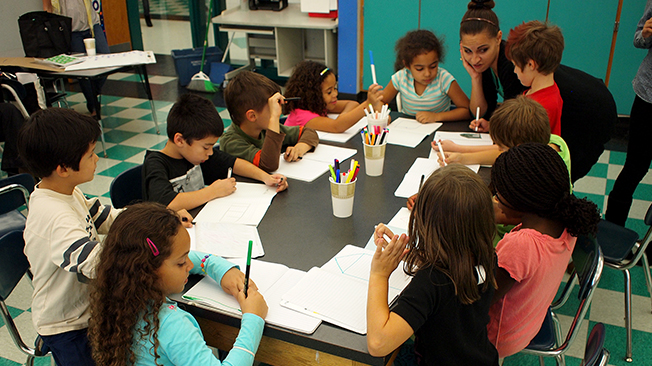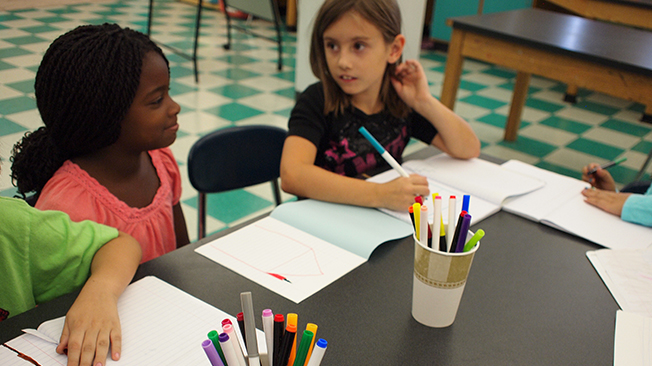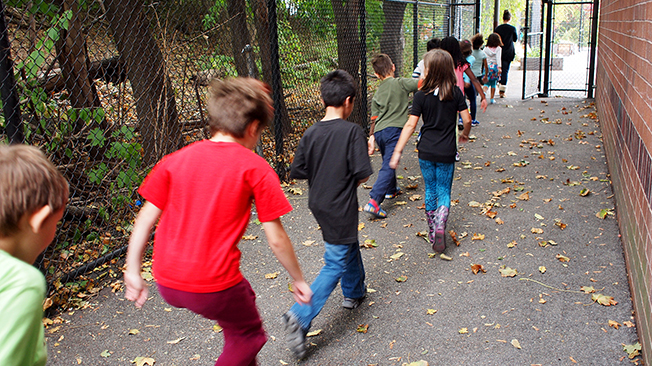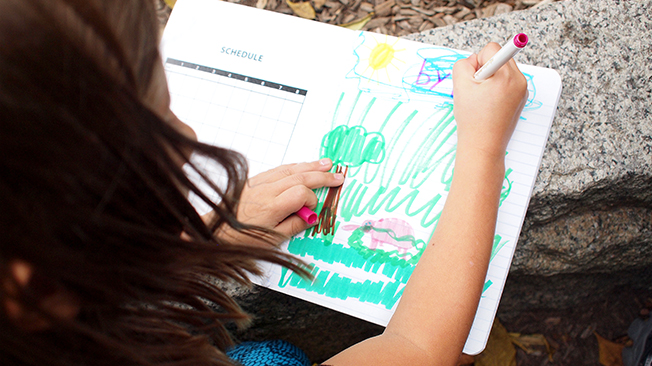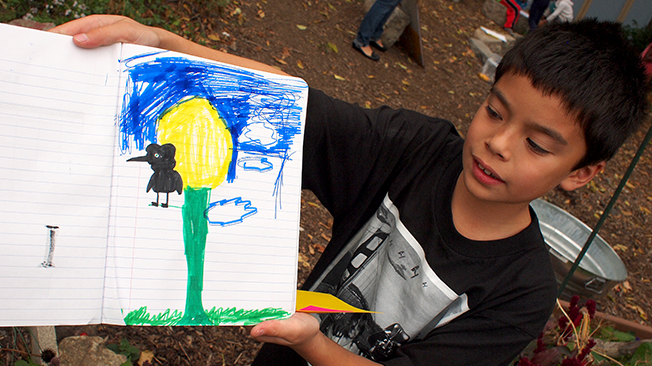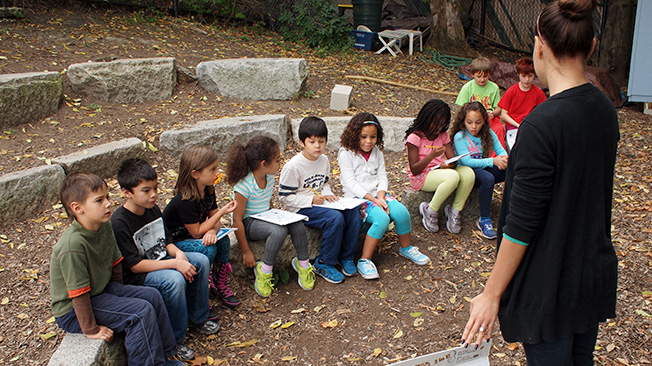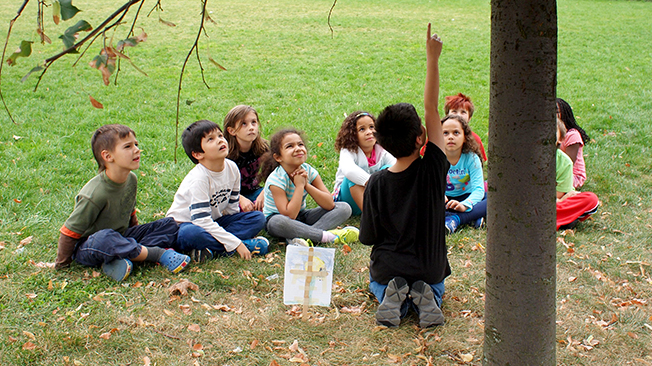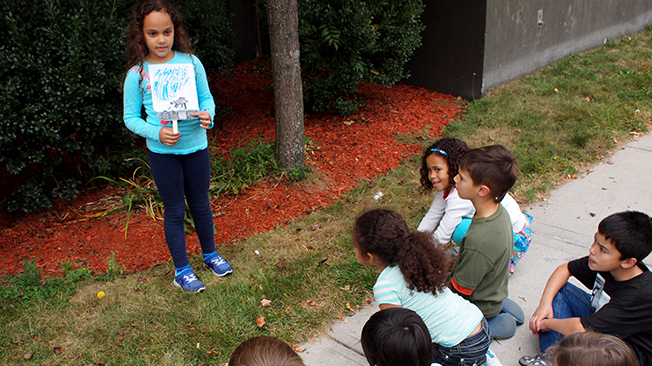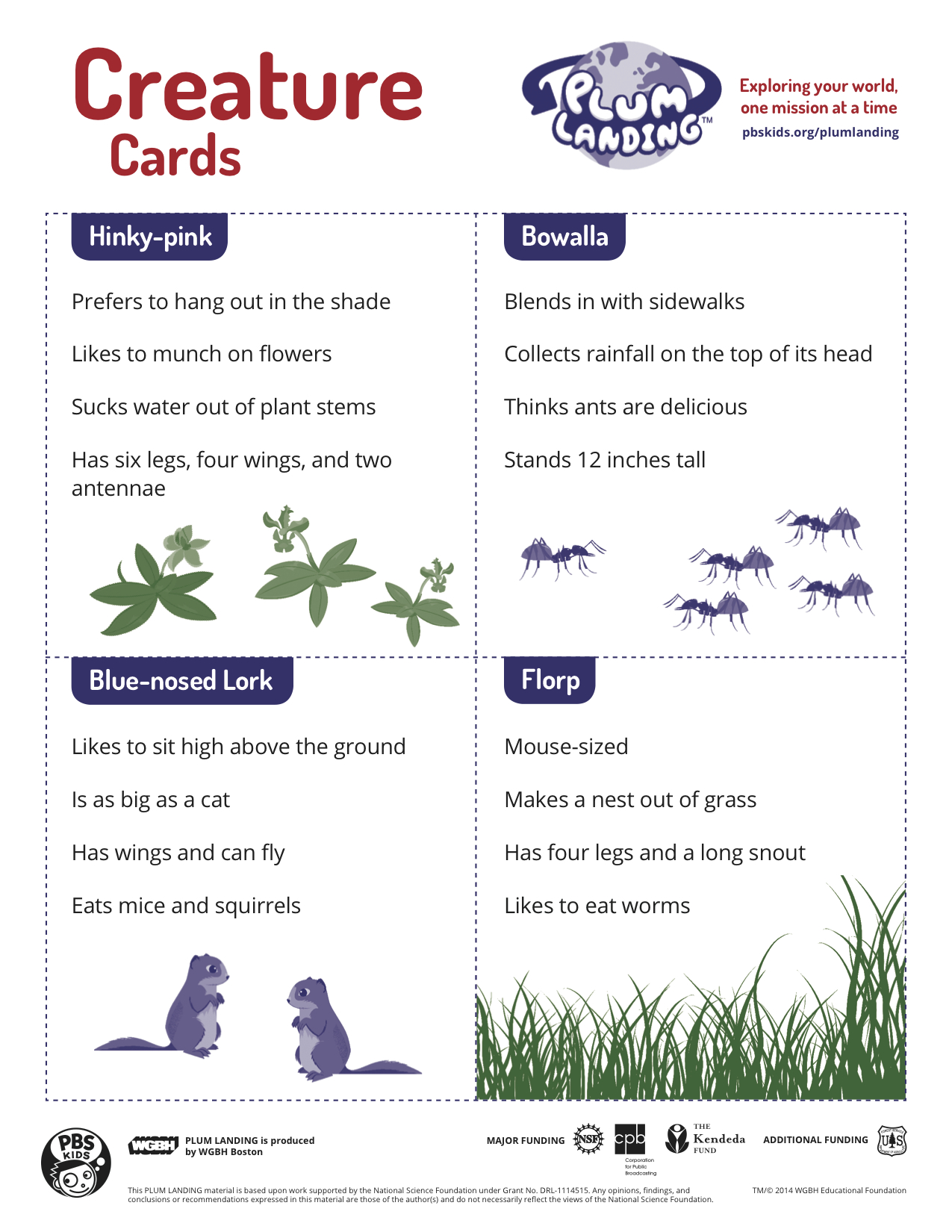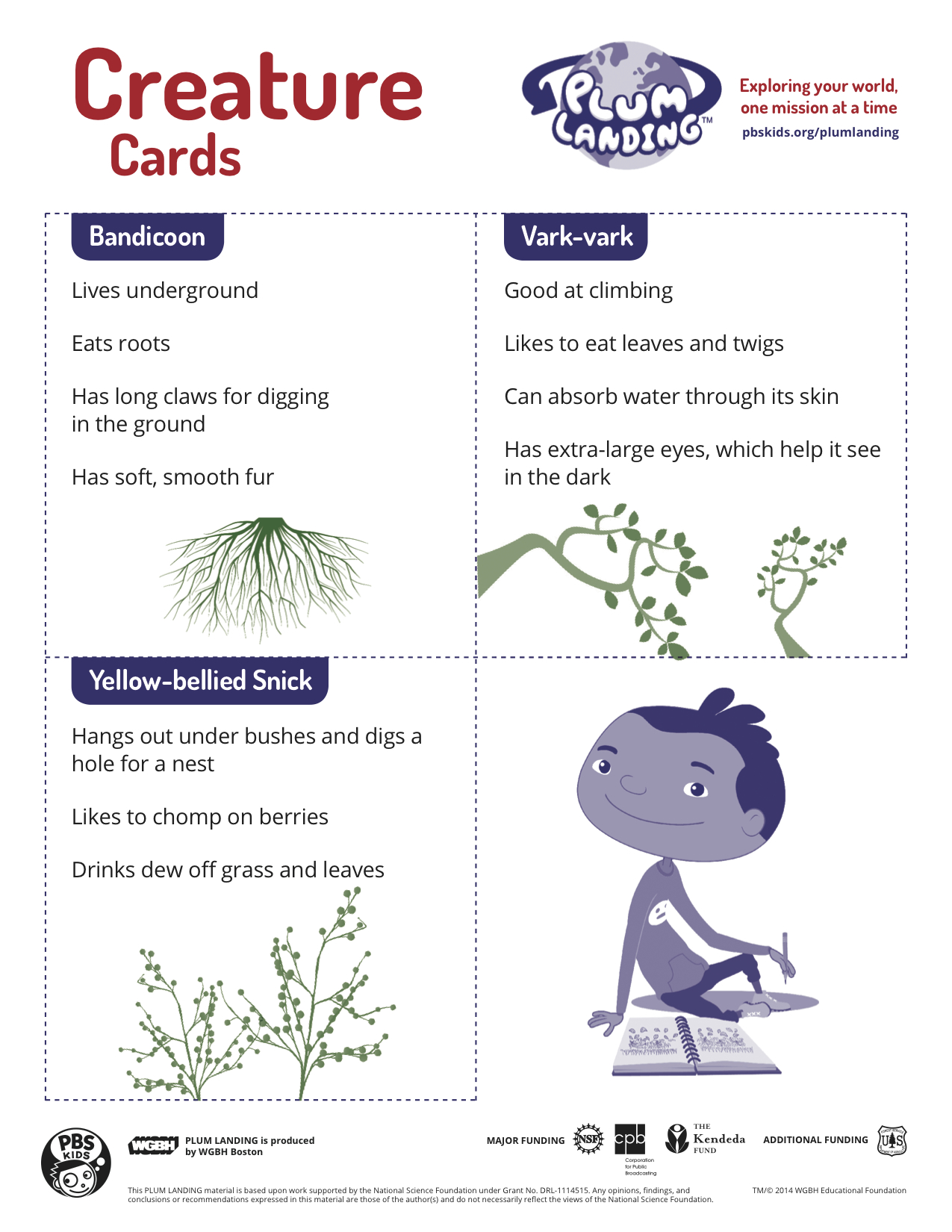Habitat Sweet Habitat
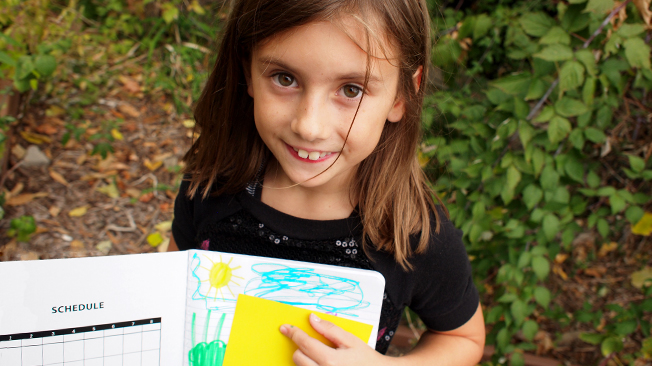
What Is This Activity?
When you're hungry, you probably head to the kitchen for a snack. If you're thirsty, you might grab a drink from the fridge. And when you're tired, you go to sleep in your bedroom. But what do animals do when they are hungry, thirsty, or tired? Find out in this activity!
Introduction
-
-
00:00
What Are Kids Learning?
- Living things need air, water, food, light, and shelter. Living things can only survive in ecosystems in which their needs are met.
- A habitat is an organism's home. A habitat provides food, water, and shelter.
- Different areas support different kinds of living things, both on land and in water.
How Do You Get Ready?
- Read the activity and gather the materials.
- Print one copy of the handout and cut out each Creature Card.
- Scout out places where this activity will work well, such as a neighborhood park, schoolyard, or even a walk through the neighborhood.
- Troubleshoot any safety concerns (traffic, poison ivy, sharp objects, etc.).
Warm-up 10 minutes
Pass around sheets of paper and sets of crayons or markers. Ask kids to draw a picture of the place where they live. Give them about five minutes to complete this task, then lead a quick brainstorming session to get kids thinking about where they live in terms of habitats.
Ask:
- What kinds of things does your home provide for you?A place to eat, water to drink, shelter, a place to sleep.
- Has anyone heard the term "habitat"? What do you think it means?A habitat is an organism's home. A habitat provides food, water, shelter, and space.
- How is your home like your habitat?
- What do you think a habitat looks like?
- What kinds of habitats do you think we might find in our neighborhood?Give kids prompts if necessary, such as: What are some animals you see every day? Where do they find food, sleep, and raise their babies? Talk about how a robin uses its habitat to meet its needs. It might use grass or leaves to build a nest in a tree, drink water from a birdbath, and hunt for worms in gardens or lawns
Then tell kids they will be heading outdoors to find the perfect habitats for imaginary animals.
Activity 45 minutes
Part A Creating Creatures
- Head outdoors, taking Creature Cards (cut out from the handout) and the rest of the materials with you. Kids also should take their field notebooks and pencils.
- Have kids pair up, hand out one card per pair of kids, and have them draw what they think their creature might look like, based on the card's description.
- While they are doing this, copy the text below on the flipchart or posterboard:
How the creature
- finds food
- uses its habitat for shelter
- finds water
- interacts with other creatures
Part B Habitat Hunt
When kids have finished, explain that they should now find a place that looks like an ideal habitat for their creature, based on the information on the flipchart. They should:
- Come up with a fun name that describes a real living or nonliving part of their habitat, such as Asphalt Alley, Ranger's Ridge, or Crickety Thicket.
- Make a poster, using construction paper and craft supplies, for visitors to their habitat. The poster should show what's special about the habitat and the creature that lives there. They should include:
- the name of the habitat
- a drawing of the animal in the habitat, showing it either finding food or seeking shelter
Tell kids they can draw several examples of the creature in its habitat. For example, they might draw one creature eating and another sleeping in its shelter. They also may draw other real animals, such as ants or birds, that they notice in the habitat. When kids are done, have them tape their posters to craft sticks and place them in the ground in the habitat. Kids might need to tape several craft sticks together in a cross shape to support the poster.
If time permits, you might repeat the activity, but this time have students create their own creatures. If you have your students do this, remind them to consider the factors on the flipchart in describing their creatures' needs.
Wrap-up 5 minutes
Gather the group together and take a guided tour of each pair's habitat.
Ask:
- How does the animal find its food and water? How does it use the habitat for shelter and space?
- How do you think your creature might interact with the other creatures?
- Before we did this activity, how many different kinds of habitats did you think we would find here?
- Has your answer changed?
- What might be some real animals you would find in your habitat?
Explore Some More
Creature Feature
Have kids act out a short play in which they show how the creatures interact with each other, and how they use the different parts of their habitat throughout the day and night. For example, is one a predator and one prey? Have them imagine, and show, how the prey might hide from the predator-and how the predator might sneak up on the prey. They could use their model creatures to act out that interaction. If you have action figures or models of animals or other creatures, have kids incorporate these into their plays as well.

